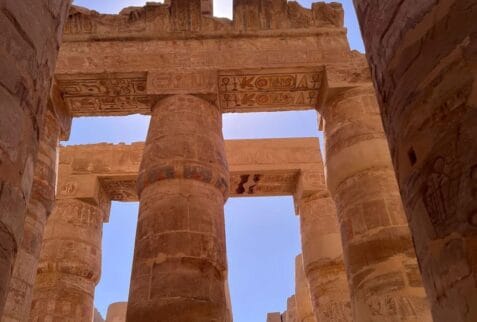Karnak Temple
the Karnak temple complex at Luxor developed over more than 1,000 years, principally between the Twelfth and Twentieth Dynasties. It was, at its peak, the largest and most important religious complex in ancient Egypt. The most significant structure, and the largest religious building ever built, is the Temple of Amun-Ra, considered to be where that god lived on earth with his wife, Mut, and son, Khonsu, who also have temples at the site. The Temple of Amun-Ra is particularly famous for the vast Hypostyle Hall constructed during the reign of Seti I. After Memphis became the new dynastic capital, many of Luxor’s temples declined in importance. In later centuries, Ptolemaic rulers and Coptic Christians altered parts of the complex for their own uses.


- he Karnak Temple is a massive temple complex to which dozens of pharaohs added their own constructions. The area was in constant development and use between the Middle Kingdom (2080–1640 B.C.) and the early Christian period. The immense size of the complex, as well as its various architectural, artistic, and linguistic details make it an invaluable historical site and resource for understanding the evolution of ancient Egypt, and thus its conservation is critical. Because of its long history of construction and functionality, the gods worshipped at Karnak range from some of the earliest Egyptian deities to some of the latest, thus offering an impressive presentation of ancient Egyptian religious practices and beliefs.































